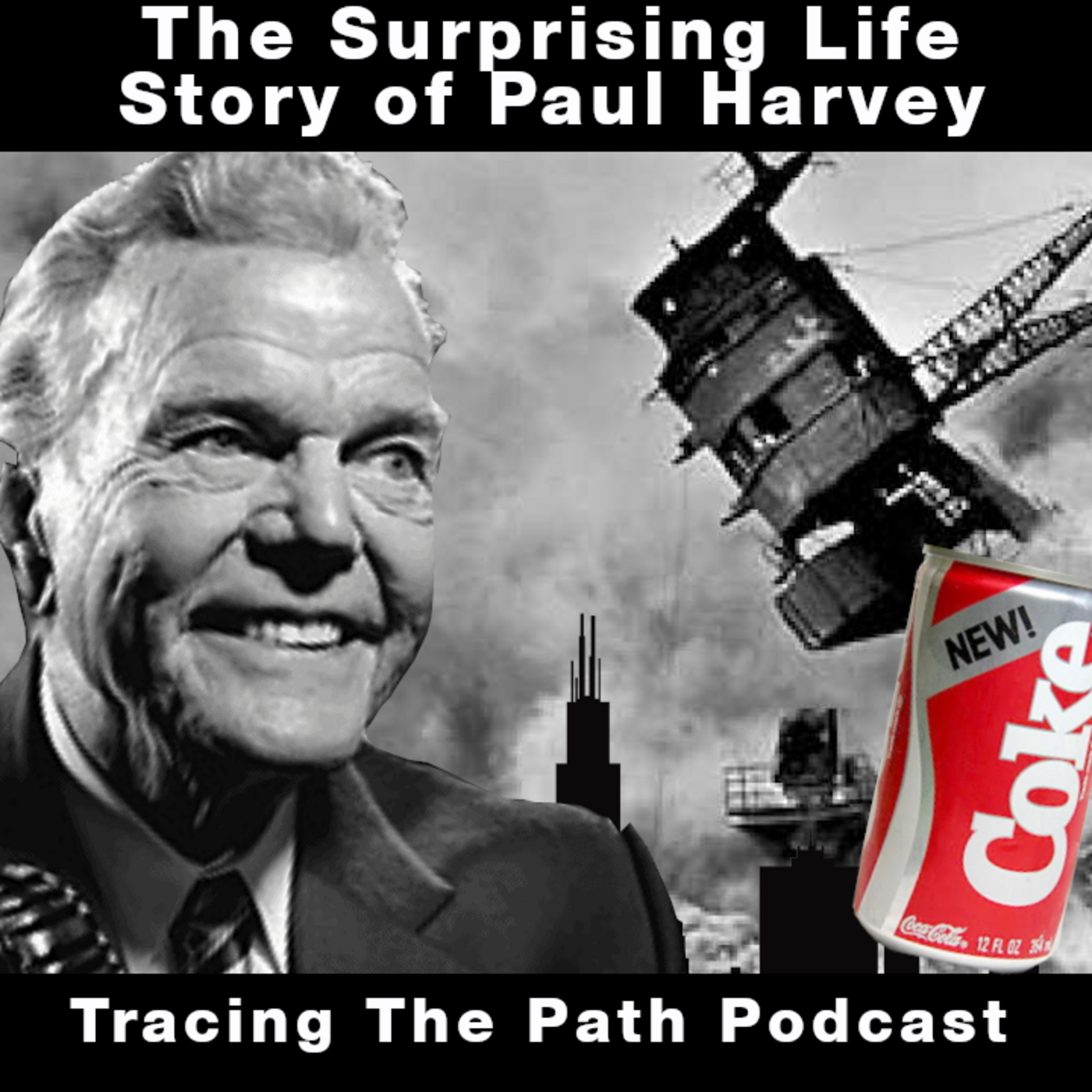
The Surprising Life Story of Paul Harvey (Radio)
It highlights the unforeseen connections and pivotal moments, like his high school teacher’s belief in him and his wife Angel’s strategic ideas, that shaped his career. The narrative also weaves in the broader evolution of the radio industry and the impact of significant historical events on his path, ultimately emphasizing the importance of hard work, surrounding yourself with the right people, and pursuing your passions.

Group Leaders:
If you run an activity group, classroom or “audio book club”, click here for more information on using Tracing The Path.

The Surprising Life Story of Paul Harvey
We don’t meet people by accident. They are meant to cross our paths.
Oftentimes, we meet those people later in life during a different chapter. For those who work hard and treat others with respect, these second chance meetings can change our lives.
In today’s story, we hear about Paul Harvey and the path he took to becoming the most influential man of the 20th century.
It all started back in Italy in 1896, where a 20-year-old Guglielmo Marconi was working to expand the reach of radio waves. He’s the guy you were probably told invented the radio, but that’s not really true. Marconi just thought you should be able to broadcast much further than was previously possible. And that’s what he did.
He made long distance radio transmission possible. And in so doing, he forever changed the world.
His innovation made radio the most sought after tool of the early 20th century. Governments, transportation companies and militaries all wanted it. It was primarily the water that made radio important.
For the first time in history, ships at sea could communicate with people on the shore. And that made governments nervous too. In fact later, when the US entered World War I, it seized control of the nation’s airways. For two years, they prohibited anyone from broadcasting and even made it illegal to own a radio.
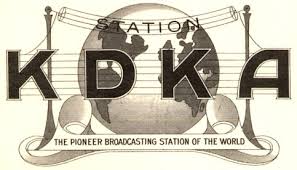
After the war, however, radio took on a new role, Entertainment! KDKA, Pittsburgh was the first radio station to broadcast a schedule including music, comedy, and everyone’s favorite bass player. And seeing the demand, magazines started publishing the instructions for making no electricity crystal radios just by combining some household items like foil and wire. Kids everywhere would save the newly invented toilet paper rolls to make radios.
A young lad in Michigan, John Fetzer, made his own radios for 25 cents and sold them to his friends for a dollar so they could all listen to the Detroit Tigers. But only Detroit Tigers fans, he sold them to no one else.
PAUL HARVEY
And schools got in on the action too. In Tulsa, Oklahoma, a young speech and performing arts teacher at the local high school Isabella Roman, thought radio would be a good way to connect with the students. She and a local radio station, KVOO, hatched a plan to bring the kids in one day a year to learn about broadcasting. They even let some of the kids read the telegraph report live on the air.
One of those years, she felt a particular student had real potential. He impressed her so much. She marched him down to the station after school one day and told the programming manager, “This boy needs to be on the radio. Can you give him a job?”
They said sure gave this youngster plenty of cleaning, tidying, and odd jobs to do at the station.
Little did they know, this would be the first step in this young man’s journey to becoming the most influential man of the modern age. At age 14, Paul Harvey was given a radio job. Working on the radio was a dream come true for Paul, as he too had spent countless hours listening to his crystal radio.
He couldn’t have been happier the first time they let him read the lead into the Saturday matinee of the Metropolitan Opera. It was the dream that started a lifetime. When he graduated, they took him on full time, paying him $29.50 a week. It was enough money to allow him to enroll at the University of Tulsa, a hope his mother never thought possible.
You see, his father had been a Tulsa policeman. When Paul was three, his father was killed in the line of duty, in a Bonnie and Clyde type shoot out. And that left his mom in a financial lurch. So much so, she rented part of their property to others to make ends meet.
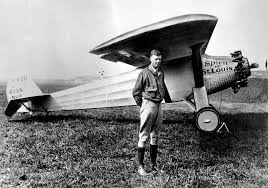
Despite the low income, though, she did her best to make life good. Paul remembered when he was nine, she took them to the airfield to see Charles Lindbergh land. Just days earlier, he had heard on the radio that Lindbergh crossed the Atlantic, and now he was in Tulsa for their International Petroleum Expo. Paul never forgot how that sparked in him a desire to fly and see the world.
Radio was so important to Paul that he never actually finished the University of Tulsa. An offer came in from a radio station in Salinas, Kansas. It would be the same money, but he’d be the station manager, which meant as much airtime as he wanted. And so began the second leg of his journey.
Unbeknownst to Paul, the owners of the station, Farmers and Bankers Life Insurance, actually wanted the station to fail. They wanted to move it out of Salinas, but the FCC didn’t want to give them a license unless they could prove Salinas was not commercially viable. So they searched for the least experienced candidate they could find, and they did, the young and energetic station hand in Tulsa,Paul Harvey.
But they didn’t know Paul very well. He did not let that station fail. Instead, in three years, he made it popular, profitable, and thriving. Paul fell into his own. He was born for this job.
Man on the street interviews, remote broadcasts, live music, traveling around the state. He was full of broadcasting ideas to grow the audience. B
ut the job also came with non-broadcasting duties like accounting, hiring and firing, overseeing the programming and local politics. And even though he loved it, he found himself looking for other opportunities.
And over the next two years, he’d take positions at KOMA. in Oklahoma and KXOK in St. Louis. Actually, his boss at KOMA Oklahoma got offered the manager job in St. Louis and brought Paul with him. Allen Franklin was excited about growing this new St. Louis station, but he wasn’t about to do it without the most creative person he’d ever met, Paul Harvey.
Paul would gain new freedom in St. Louis. Second on the totem pole, he had plenty of authority to try new things, and not to content to be heard only in St. Louis, Paul negotiated with other stations to pick up his live feeds when doing remote broadcasts.
He also found his love of news. He would scour the telegraph and news reports that came in to find the perfect stories.
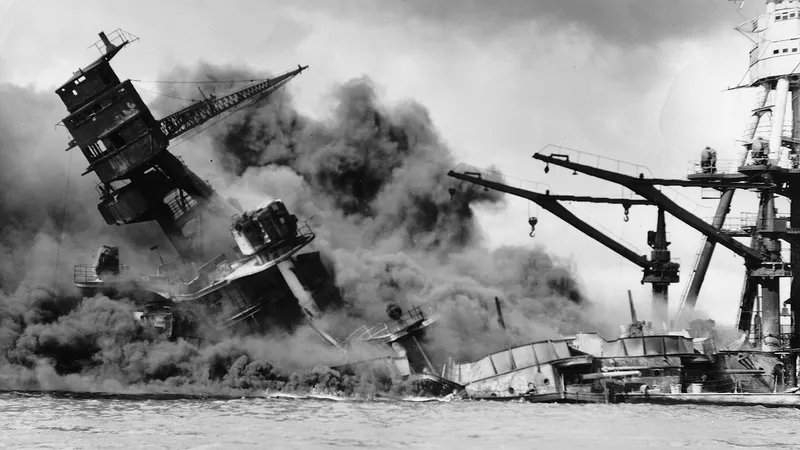
PEARL HARBOR
In 1941, after seeing a variety of snippets and mentions and reports, Paul felt like he’d stumbled onto a big story and felt the only way to cover it was to go there. He’d uncovered an under the radar movement of ships and personnel from the bases in the Atlantic to Hawaii in the Pacific.
The military was moving the fleet. To Paul, this was big, because the war was raging in Europe across the Atlantic. The only thing happening in the Pacific was the second Sino-Japanese war, so why move ships?
The station didn’t have enough money for this field reporting assignment, especially at being two people. You see, Paul met the love of his life, Angel, while at KXOK St. Louis, and the two never planned to be apart again. If he was going to Hawaii, she was too.
To get the money they needed, he negotiated a deal with both the radio station and the St. Louis Dispatch newspaper to also be a field reporter for them. So Angel and Paul made their way to California and began the four-day cruise to Hawaii. Angel was a reporter herself and had a keen business mind. The two of them uncovered and then covered every story they could find crisscrossing the island meeting all the people.
But nothing was coming out of the US build up in the Pacific. And after six months, they were homesick for the mainland. So on December 5th, 1941, they boarded the SS Lurline to come home.
That’s right. December 5th, 1941.
And guess who else was on that ship? A young Jackie Robinson. He’d bee playing football in Hawaii and too was on his way back to California. An unknown Jackie Robinson and an unknown Paul Harvey were halfway home when they heard the story.
Two days after they left, the Japanese attacked Pearl Harbor. It would be the only regret Paul would take to the grave, but it did fuel him a patriotic fire that never went out.
BERRIEN SPRINGS & KALAMAZOO
Landing in California with no real home base, they headed to Montana to check out a new job. But before we move on, we must take a step back. Remember young John Fetzer, the lad who sold radios to his friends so they could listen to the Detroit Tigers? His radio building days didn’t end with childhood. After working as an engineer for a telegraph company, he was asked by a college in Berrien Springs, Michigan if he would build them a radio station and teach broadcasting, which he gladly did and taught for five years.
But the college ran into financial trouble as the 1929 Great Depression took hold and decided to sell the radio station. John Fetzer bought it, bought it with big dreams, bigger than Berrien Springs. it, but bought it with big dreams bigger than Berrien Springs. So he moved the station to larger Kalamazoo, the last city in Michigan without a station.
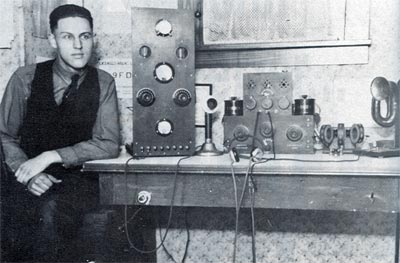
Like Paul Harvey did in Salinas, John worked hard to make it a success. He bartered advertising time for studio space. He broadcast everything and anything of interest. But what would really grow his station he thought would be the ability to broadcast at night. A.M. radio waves didn’t fare so well when the sun goes down.
Without getting too science-y, when the radiation from the sun goes away, our ionosphere shrinks. Well, when that happens, the A.M. radio waves that bounce off the ionosphere do so much higher in the atmosphere, which causes a great deal more interference and can be heard much farther away.
So John set out to solve the problem and built himself a more powerful directional antenna, and it worked. But it worked too well. A station 600 miles away in Omaha, with the same frequency complained about the interference and sued John.
John fought the case all the way to the Supreme Court twice. And then it was finally put to rest in the US Senate in 1938. John’s invention of antenna would then allow 3,000 new stations to get their licenses. Back home, John’s station was flourishing. So much so, he had to hire more personnel and in 1942, he hired a new station manager, Ray Navarro.
Ray’s job was to bring in new talent. His first call was to track down a field reporter that worked for him at KXOK St. Louis. And he found him in Montana, fresh back from his Hawaii trip. Paul Harvey. So Paul and Angel found themselves on the way to Kalamazoo.
John Fetzer’s court case caught the attention of the people in Washington. With World War II in full swing, he was asked to be the head of the National Radio Center for the U.S. Office of Censorship. John and the people in the office loathed the idea of censorship, but it was better than the government seizing the stations.
So he created an all-volunteer censorship list and a path to shut down the office once the war was over. This service to country kept that fire going in Paul Harvey.
He wanted to do his part.
ARMY PAUL
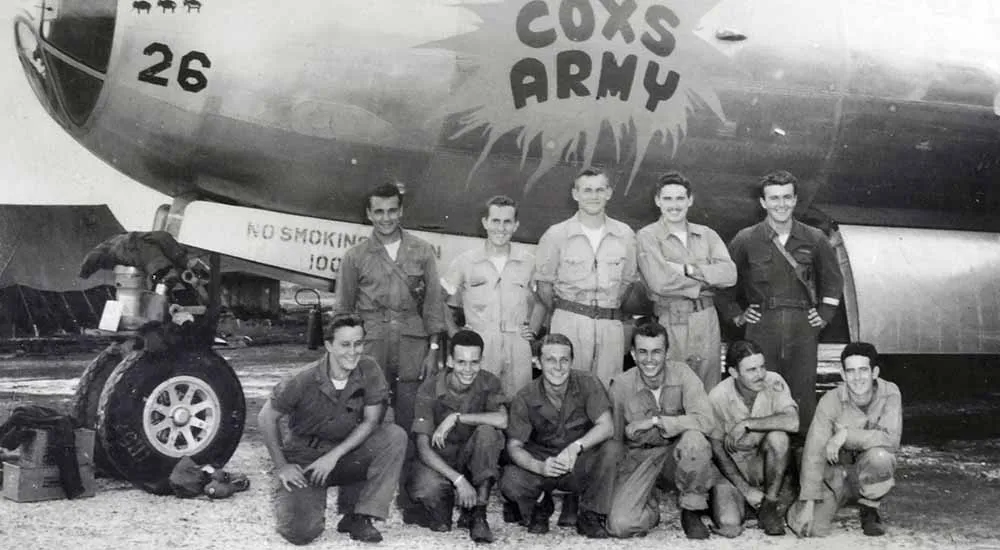
So in 1943 with John’s blessing, Paul joined the Army Air Corps in hopes of fulfilling that dream Charles Lindberg had sparked. Paul’s job in the Army Air Corps didn’t last long.
An injury to his heel sidelined him, while Angel was sad to see that dream come to an end, she was witnessing some major changes in the radio world. She was certain their show would do well on network radio and even more sure now was the time.
After all his years of broadcasting, Angel thought Paul would do best in news and human interest. And she hit this nagging sensation that he would do well at 10 p.m. Nobody had tried news at 10 p.m. But she had a hunch it would work.
GUGLIELMO MARCONI
Would you believe that brings us all the way back to 1896 and Guglielmo Marconi?
Marconi found an audience in the UK for his products and advances. And in 1897 he started the Wireless Telegraph and Signal Company in the UK and a separate one in America. His companies would grow giant at the beginning of the new century.
But World War I would pose a problem. The U.S. government seized this company, like all the others. However, at the end of the war, the U.S. Navy didn’t want to give Marconi’s back. Not only were they worried about Marconi’s work in Mussolini’s government, but also they didn’t want a British company to have a large stake in the US broadcasting or the important undersea cables.
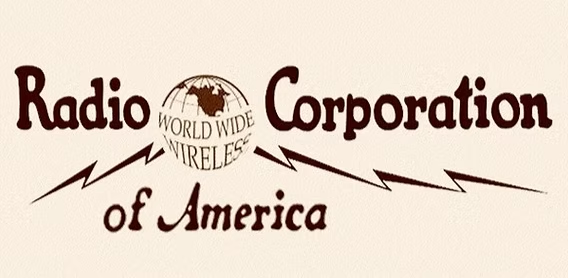
The US Navy attempted to orchestrate its buyout by an American Company. They approached GE, who partnered with Westinghouse, AT&T and United Fruit, to buy Marconi’s company. And they did.
After buying it, they renamed it the Radio Corporation of America, which became the largest radio communication company in the U.S. RCA.
They became so big that radio was just a division in the company, a division they called the National Broadcasting Company, NBC.
Then in 1926, AT&T decided to shed its own network of radio stations, and RCA bought it.
Now, they had two large networks, one they named NBC Red and one NBC Blue. But the FCC didn’t like it, and a few years later told them to break it up.
So in 1943, NBC Blue, Marconi’s old company, was sold to Edward J. Noble, the guy who owned Rexall Drugs and Lifesavers Candy. A shrewd businessman himself, he wanted his new company to appear first in all of the listings, so he renamed it from NBC Blue to the American Broadcasting Company, ABC.
The NBC ABC shake-up had created some bad blood, new ownership meant new deals, new pay, new insurance, new everything for some people.
So some shows fled the NBC ABC duo for Safer CBS.
From this, Angel got word that a station in Chicago, WENR, was going to need a new 10 PM show. The Jack Benny Show was not satisfied with the terms of this new ABC network and left.
Paul and Angel quickly pitched their idea of Paul doing news at 10. And in 1945 Paul Harvey News and Comment was a real show on network radio.
THE REST OF THE STORY
And Angel had an idea for a new segment called The Rest of the Story.
They were surrounded by some great talent at WENR, like Mike Wallace, Hugh Downs, Danny Thomas, and even actor Robert Montgomery. Robert Montgomery was a national news commentator with ABC radio, but he was only there as a result of the McCarthy Hollywood Communist witch hunt.
He was sort of hiding.
By 1950, he was ready to go back and ABC needed a substitute, so for the first time, Paul and Angel got their national exposure, and the exposure caught the attention of Joseph Kennedy.
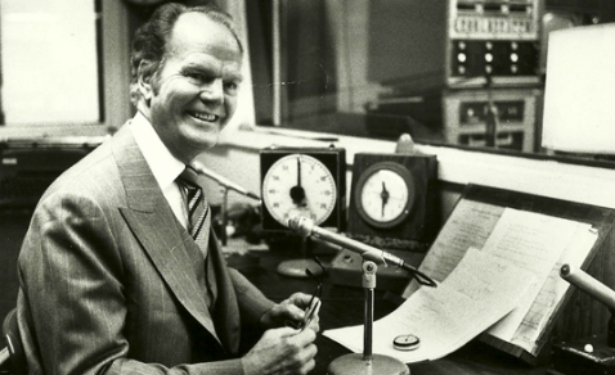
Joseph Kennedy’s first big job was at Bethlehem Steel, and one of his biggest projects was producing the steel for the largest building in the world, the Merchandise Mart in Chicago. Years later he would actually become the sole owner of Merchandise Mart. And one of its tenants was WENR Chicago, home of Paul Harvey, News and Comment.
Paul and Joe Kennedy became friends, and one day at lunch Joe said, “Paul, let’s make Paul Harvey News and Comment a national show on ABC.” So he called ABC and did just that.
April 1, 1951 would be the last day Paul would fill in for anyone. And for the next six decades Paul Harvey would be a staple at ABC News. Paul Harvey News and Comment would grow to hundreds of stations. And Paul’s treatment of its sponsors would make it extremely successful.
They would get one more break, per se. In the 1970s, a true Paul Harvey fan, Ed McLaughlin, would become president of the ABC Network, and he would push and shove all the stations in the network to carry Paul Harvey News and Comment and his new stand alone show, The Rest of the Story.
Their influence would grow to 1300 stations, 400 armed services radio stations, newspaper and TV. Paul’s words were heard by presidents, leaders, CEOs, and millions of people. Sponsors would get royal treatment and often stayed for years. Presidents would respond to his words and CEOs would even change their strategy.
He was becoming the most influential man of the 20th century.
Finally, Paul’s true claim to fame is not even his idea. The Rest of The Story was Angel’s idea, but did you know that he also didn’t write it?
Nope, That credit belongs to an up and coming pianist, whose car accident revealed his second great talent. You see, Angel Harvey wanted to turn The Rest of the Story from a segment into a show, but Paul didn’t have time to write it.
Up-stepped the pianist who couldn’t play piano while he recovered, but he could type. Angel and Paul said yes, and forever after, this young man would write the stories. You and I know him as Paul Harvey Jr., the only son of Paul and Angel.
In Paul’s final contract with ABC, he signed a 10-year deal that guaranteed him $10 million per year. He was 82.
Paul and Angel passed away a few months apart, just two years later.
Paul’s story is made of three strong elements. When you work hard, people notice. is made of three strong elements. When you work hard, people notice. Three times in his life, a former employer called to say, “I need you.”
Also, when you surround yourself with people like Angel and Paul Harvey Jr., there’s no telling how far you can go.
But finally, you’re going to meet people who can help you. You’re going to see opportunities that will take you further. The question we have for you is, are you doing the thing you’re passionate about, or did you already compromise that?
As actor Jim Carrey once said, “If you can fail at what you don’t want, you might as well take a chance on doing what you love.
Welcome to Tracing the Path with Dan R Morris.
CUTTING ROOM FLOOR
To hear all the stories that hit the cutting room floor, you have to listen to the episode.
ABOUT THE SHOW
Let us tell you the story of the 20th Century, by tracing each event back to the original decisions that shaped it. You’ll quickly find out that everybody and everything is connected. If you thought you understood the 20th Century, you’re in for a treat.
Tracing the Path is inspired by storytellers like Paul Harvey, Charles Kuralt, and Andy Rooney.
INTERCONNECTED EPISODES
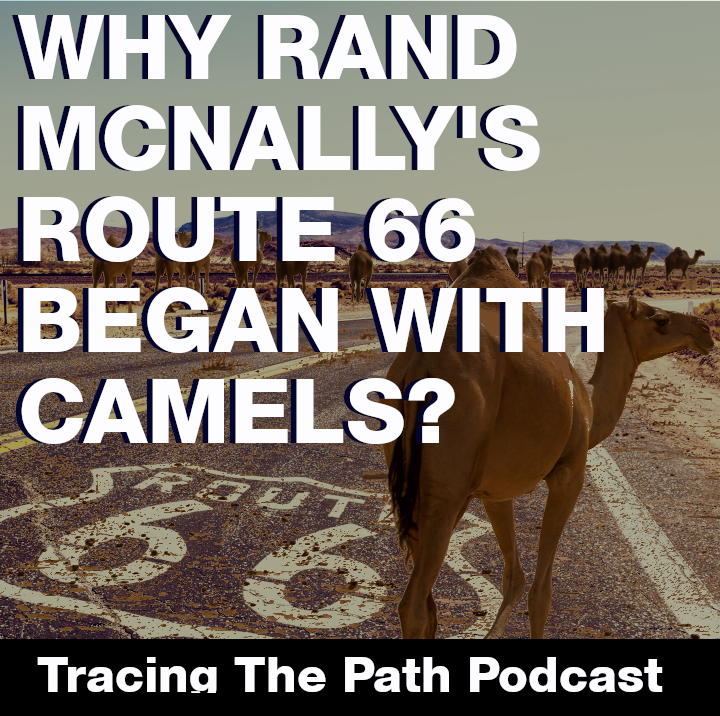 |
Why Rand McNally’s Route 66 Started with Camels You’ve heard the story about Roman Wagon Ruts, right? That’s not this. |
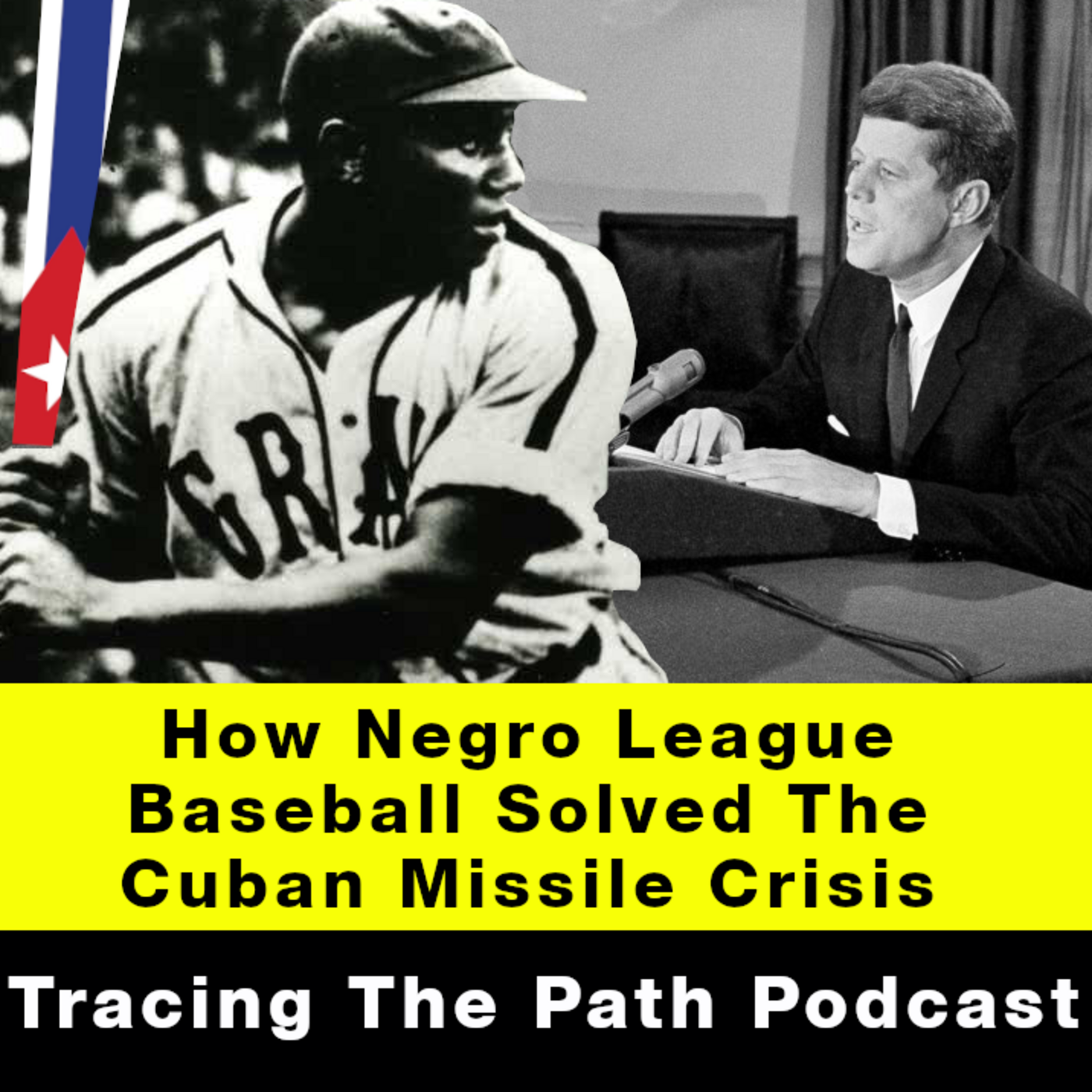 |
How Negro League Baseball Solved the Cuban Missile Crisis It was bittersweet to see the Negro League end. So many goods, so many bads. |
 |
How many times has Coca-Cola Changed the Recipe? Coke Classic was one, right? But did they really change it back to the original? |
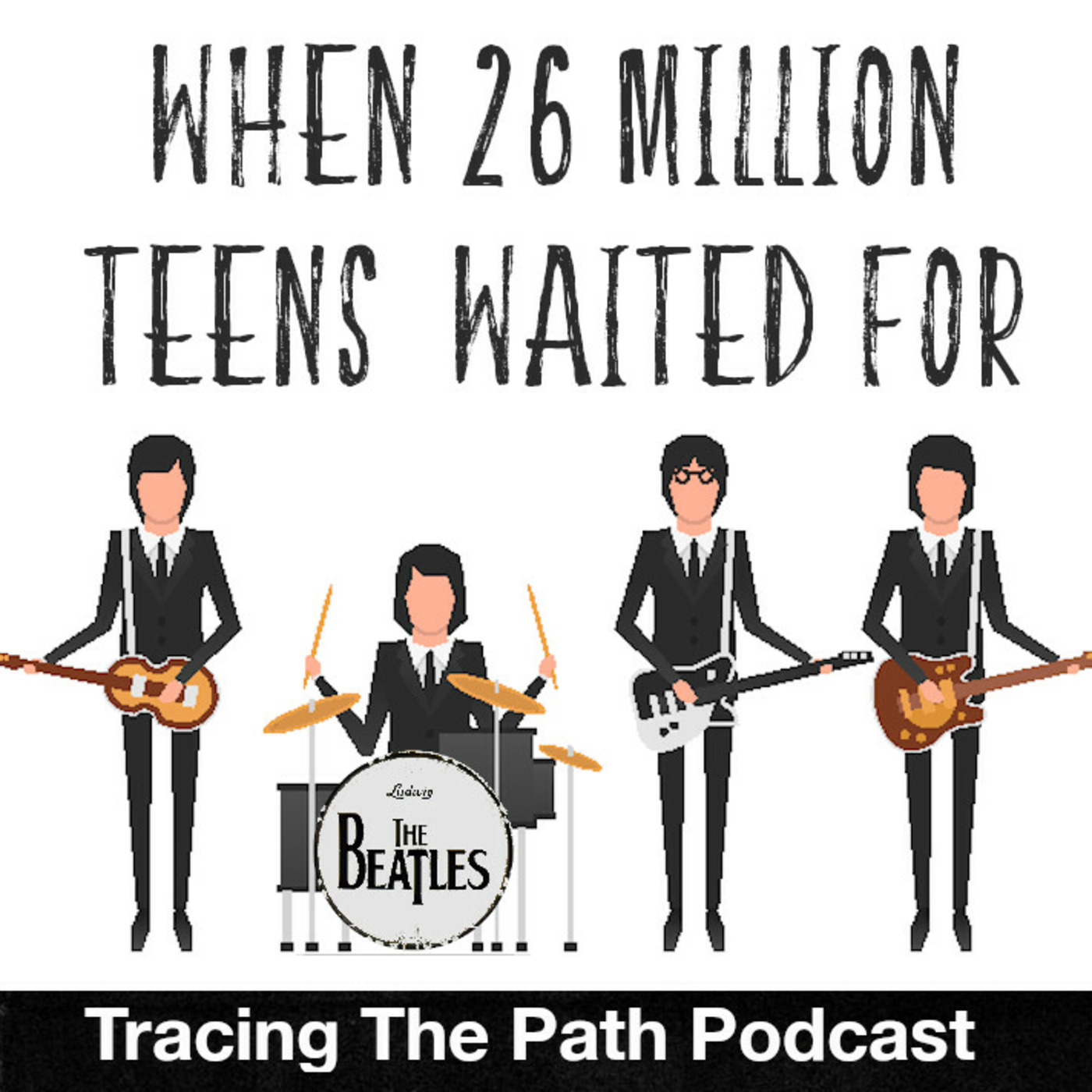 |
When 26 Million Teens Waited for the Beatles The phenomenon that occurred when the Beatles were live on the Ed Sullivan show could have been predicted. . . |
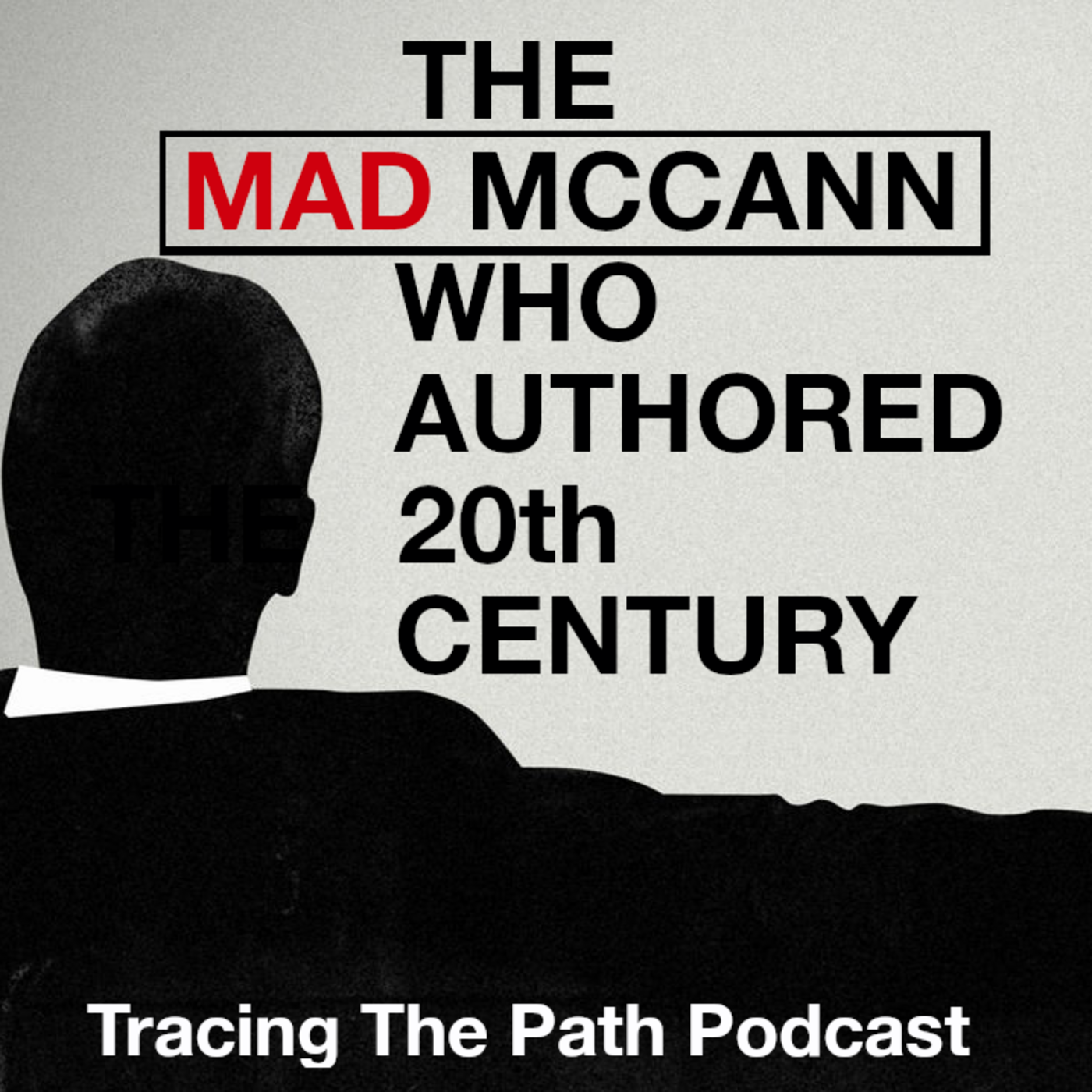 |
The Cropduster, The Military Plot and Lindbergh’s 322 bones The world of Lindbergh is wrapped up into so many things. |
SEE THE BIBLIOGRAPHY
SUBSCRIBE AND LISTEN (FOR FREE!)
RATINGS & REVIEWS
If you enjoy this podcast, please give it a rating and review.Positive ratings and reviews help bring Tracing The Path to the attention of other history lovers who may not be aware of our show.



